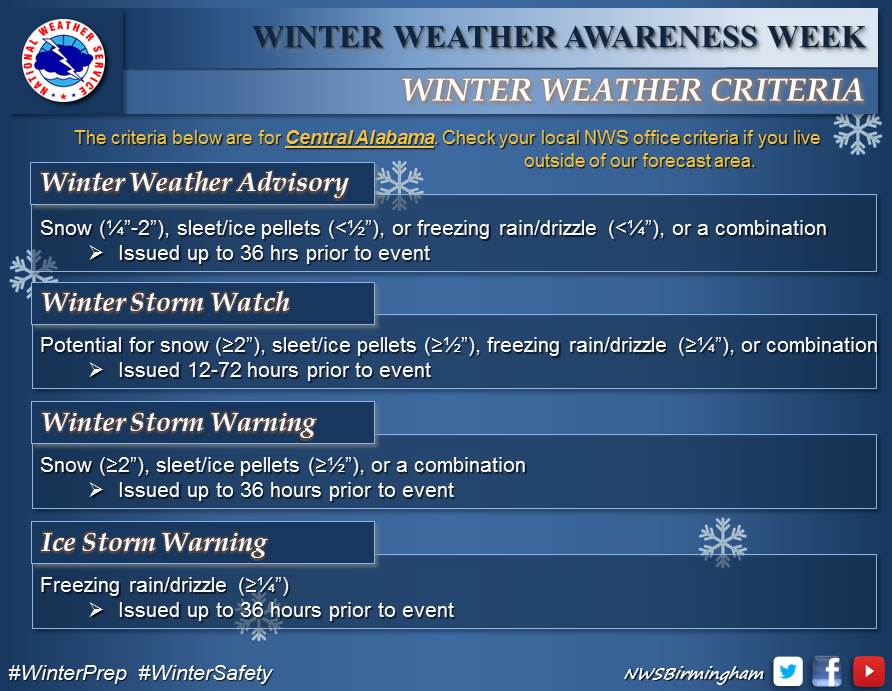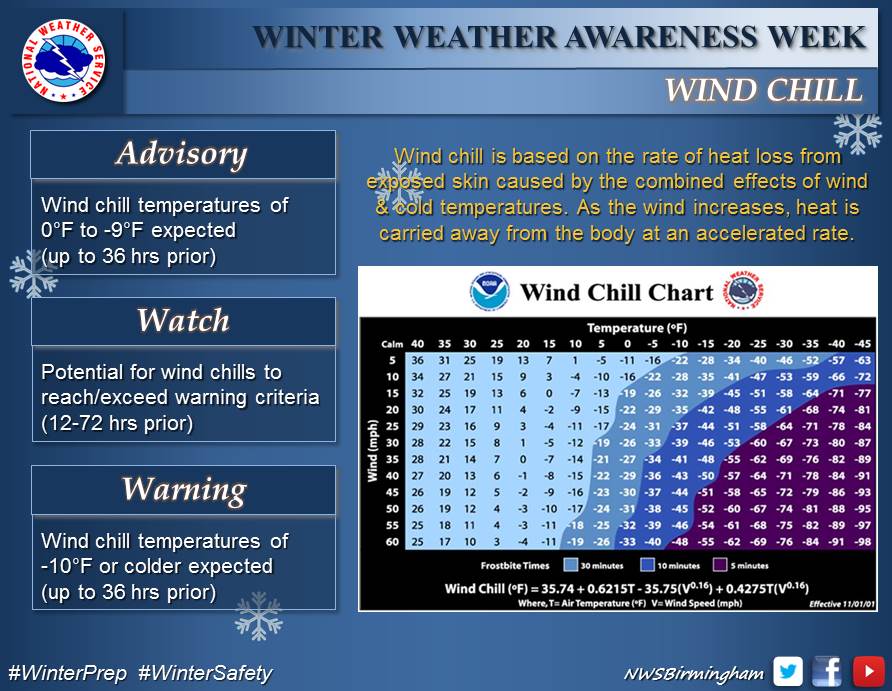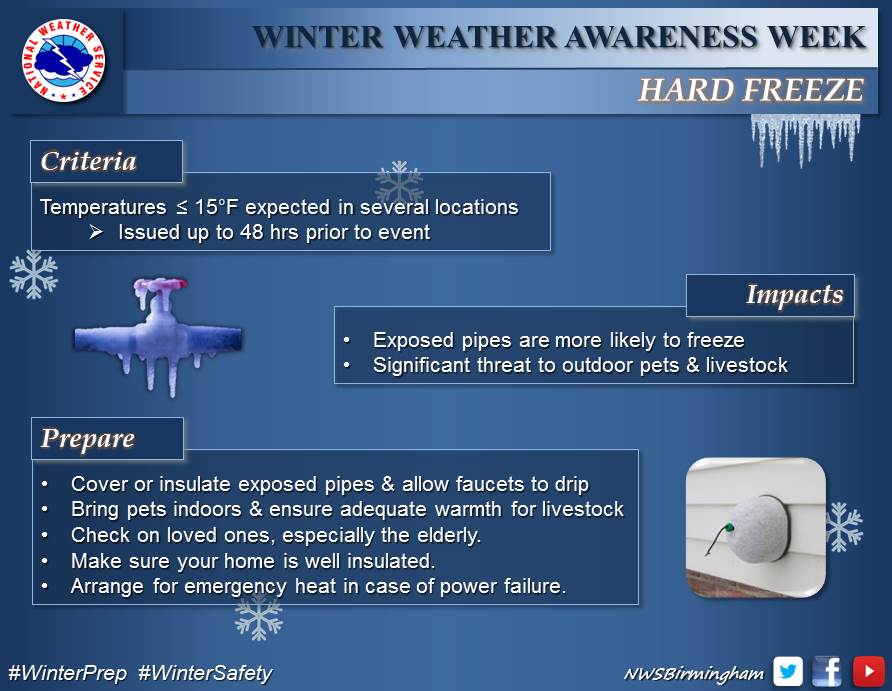The National Weather Service and the Alabama Emergency Management Agency have declared the week of Sunday, November 12th – Friday, November 17th,
Winter Weather Awareness Week.
Now is the time to ensure that you and your family are prepared for winter weather hazards that may affect Etowah County.
· Assemble emergency supply kits for your home and automobile.
· Have a way to receive emergency warnings.
· Winterize your vehicle.
· Avoid driving during winter weather events, if at all possible.
· Be sure that your house is well insulated.
· Insulate pipes and faucets to prevent them from freezing and bursting. Let faucets drip a little.
· Cut away tree branches that have the possibility of falling on your house due to ice
· Have an emergency heat source.
· If you use an electric space heater, make sure it turns off when tipped over, has a thermostat control, and at least three feet of clearance from any combustibles.
· PRACTICE FIRE SAFETY!
· Make sure pets have plenty of food, water, and proper shelter.
For information on building emergency supply kits and more winter weather preparedness tips, visit https://www.weather.gov/bmx/outreach_wwaw2017
Do you know the difference between the four types of winter precipitation?
Rain – Frozen precipitation melts and reaches the ground as rain
Freezing Rain – Frozen precipitation melts in warm air. Rain falls and freezes on cold surfaces as a sheet of ice.
Sleet – Frozen precipitation melts in shallow warm air, then refreezes into sleet before reaching the ground.
Snow – Snow falls through cold air and reaches the surface.
Make sure that you’re familiar with the Winter Weather Criteria according to the National Weather Service in Birmingham.



REMEMBER, your safety is up to YOU. Prepare NOW for winter weather hazards that could impact Etowah County this Winter and Spring.
Follow GECEMA on Facebook and Twitter, or call (256) 549-4575, for more information
